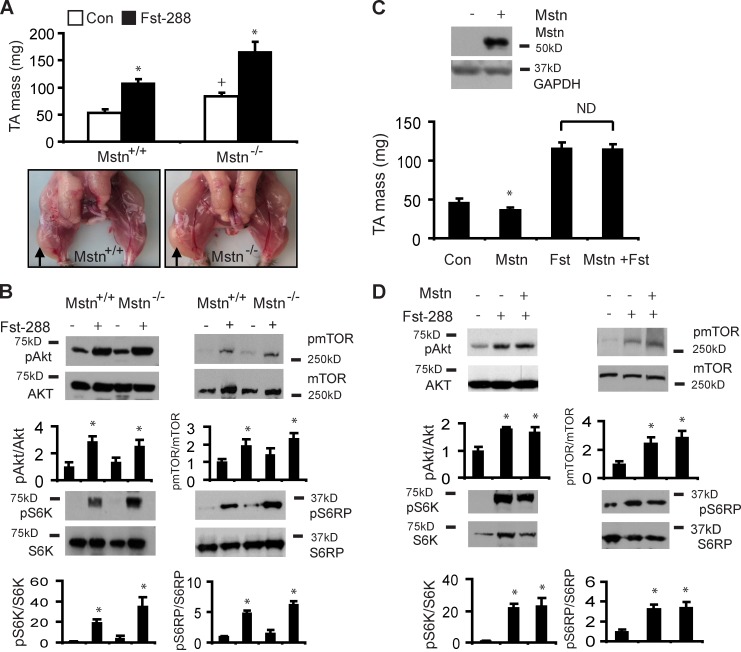Figure 3.
Fst-288 promotes skeletal muscle hypertrophy and mTOR signaling independently of myostatin expression. (A) Although 8-wk-old myostatin-null mice exhibit increased muscle size and mass compared with wild-type littermates (+, P = 0.006 for TA mass Mstn−/− vs. Mstn+/+ mice), a proportionally comparable hypertrophic response is observed 4 wk after the administration of rAAV6:Fst-288 to the TA muscles of each strain (*, P < 0.001 for TA mass between treated and respective control muscles). Arrows identify muscles injected with rAAV6:Fst-288 in representative control littermates (Mstn+/+) and Mstn−/− mice. (B) Increased phosphorylation of Akt, mTOR, S6K, and S6RP is evident 28 d after administration of rAAV6:Fst-288 to the muscles of Mstn+/+ and Mstn−/− mice (*, P < 0.05 between treated and respective control muscles). (C) Local injection of a rAAV6 vector expressing myostatin reduced TA muscle mass by ∼20% by 28 d after injection (*, P < 0.05 vs. control muscles). There was no significant effect of myostatin overexpression on Fst-induced muscle growth when muscles were examined 28 d after injection with rAAV6:Fst-288 or coinjection of rAAV6:Fst-288 with rAAV6:Mstn. (D) Co-delivery of rAAV6:Mstn with rAAV6:Fst-288 did not attenuate the phosphorylation of Akt, mTOR, S6K, or S6RP otherwise observed after injection of rAAV6:Fst-288 alone (*, P ≤ 0.05 vs. control muscles). Graphs show data from at least four independent experiments. Error bars indicate ± SEM.

